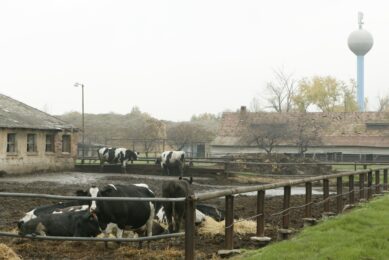ASF vaccine: what more needs to be done?

The moment of the world having its first African Swine Fever (ASF) vaccines is approaching. It is about time, as the virus has also found its way to Italy and the Caribbean. What options are there to make an ASF vaccine and how far has research progressed?
As ASF is almost always lethal, it is of paramount importance that preventing introduction of the viral disease is the primary focus for countries currently free of ASF virus. In endemic regions, however, control of the disease depends on efficient diagnosis and rapid culling of infected and exposed animals. That is not an effective method to prevent, control and eradicate ASF. Therefore, there is an urgent need to develop safe and efficient vaccines and to guarantee their optimal application in the field.
Globally, several strategies have been used to develop vaccines. However, ASF virus is complex with a double-stranded DNA genome which is hard to tackle. The virus induces massive destruction in B and T lymphocytes in lymph tissues, and ultimately there is no effective immune response. Therefore, inactivated vaccines are not effective to ward off ASFv infection. Add to that mixture a range of other factors such as limited resources, complexity of virus epidemiology, the lack of neutralising antibodies, genetic variability and knowledge gaps relating to pathogenesis and immune modulation and it is clear why developing discovery-based approaches is difficult.
Moreover, the precise nature of the host protective responses and the protective antigens needs to be fully determined to design an influential vaccine. Despite these limitations, a few laboratories devoted to working on ASF vaccinology have contributed to several influential findings in the field.
 Whole-virus-based ASF vaccines
Whole-virus-based ASF vaccines
Viruses have been either isolated from the field or experimentally generated and tested for their ability to safely induce protective immunity. Attenuated viruses can be either naturally occurring low-virulence isolates or virulent strains attenuated by deletion of defined DNA sequences encoding virulence factors. Whole-virus-based vaccines are divided into two categories.
Live attenuated ASF vaccines
Live attenuated ASF vaccines can induce varying levels of protection ranging from 60% to 100% against challenge with virulent virus, but they have the potential to cause post-vaccination reactions and adverse side effects and safety concerns. The advantage of immunisation with live attenuated virus rather than with selected antigens is the eliciting of immune responses against all the viral antigens that are normally encountered by the host during an infection; therefore, it is more effective. This approach appears – for now – to be the most promising of all strategies, yet further studies are required to develop live attenuated ASF vaccines and to address major challenges and safety concerns.
Inactivated ASF vaccines
Efforts to generate inactivated ASF vaccines capable of conferring protection have been unproductive, and there was no protection upon challenge with virulent virus. Inactivated ASF vaccines are antigenic but cannot stimulate the body to produce complete cellular immune responses, which may be part of the reason why inactivated ASF vaccines cannot provide immune protection against ASFv.
 Subunit ASF vaccines
Subunit ASF vaccines
Subunit ASF vaccines use a defined pathogen structural, non-structural or unassigned protein as antigens to stimulate immune responses. Some preliminary vaccination experiments using recombinant proteins gave promising results that could be followed up with other combinations of recombinant proteins, either as purified proteins or recombinant live-vectored virus constructs.
 DNA-based ASF vaccines
DNA-based ASF vaccines
DNA-based ASF vaccine transfers a specific antigen-coding DNA sequence into an organism to induce immune response. Although DNA-based ASF vaccines can induce high levels of immune responses, they still cannot fully resist the challenge of virulent strains. Potential advantages of DNA vaccination over traditional approaches include stimulation of immune responses, improved vaccine stability, the absence of any infectious agent and the relative ease of large-scale production.
 Live-vectored ASF vaccines
Live-vectored ASF vaccines
Viral, bacterial or plasmid-based gene expression vectors have been used as antigen delivery platforms to elicit immune response against ASFv. Although the live-vectored ASF vaccines are highly immunogenic, they did not confer significant protection following intranasal challenge with ASFv.
Future prospects
Following immunisation with candidate vaccines, protection levels vary from 0% to 100%, depending on the breed of pigs, vaccine dose, delivery route and the virus isolate used for the challenge. Recent studies have sequenced the warthog and bush pig genomes to better understand mechanisms of tolerance to ASFv infection and how the disease burden is reduced in these swine species compared to domestic swine. Although promising ASF vaccine candidates are available, continuous collaborative research is needed before introduction of a commercially available vaccine.











